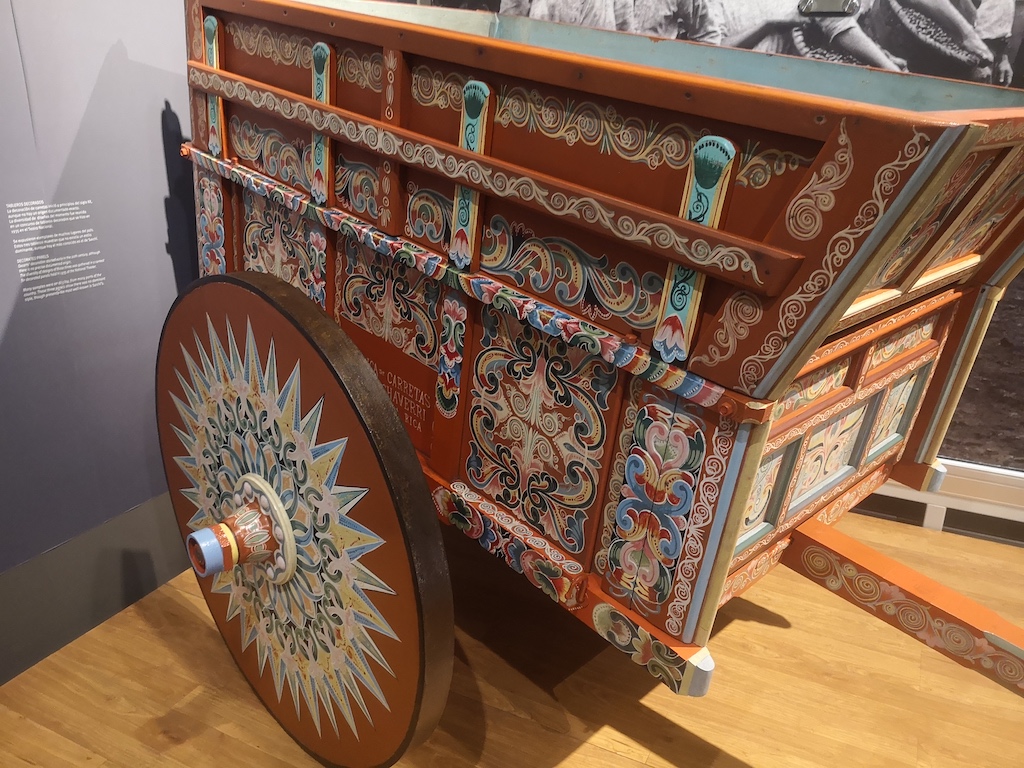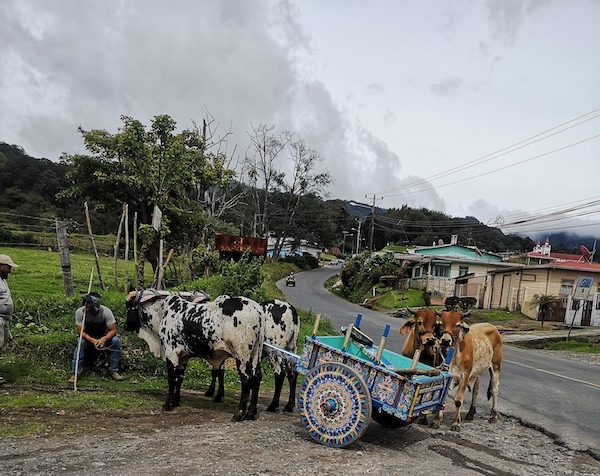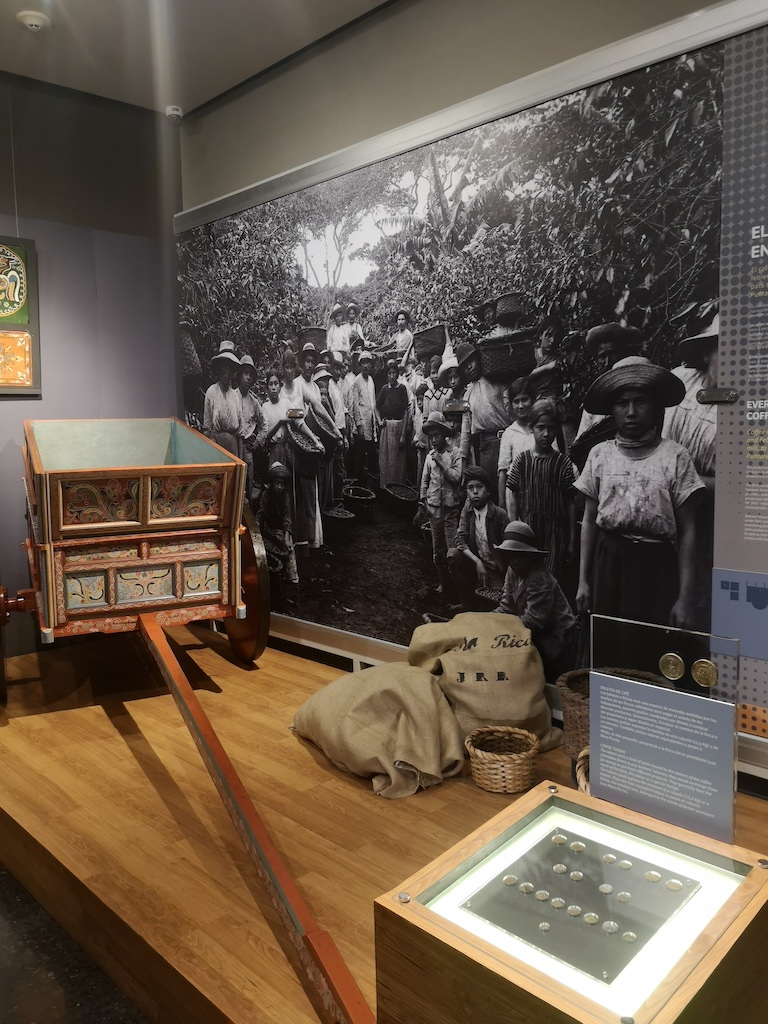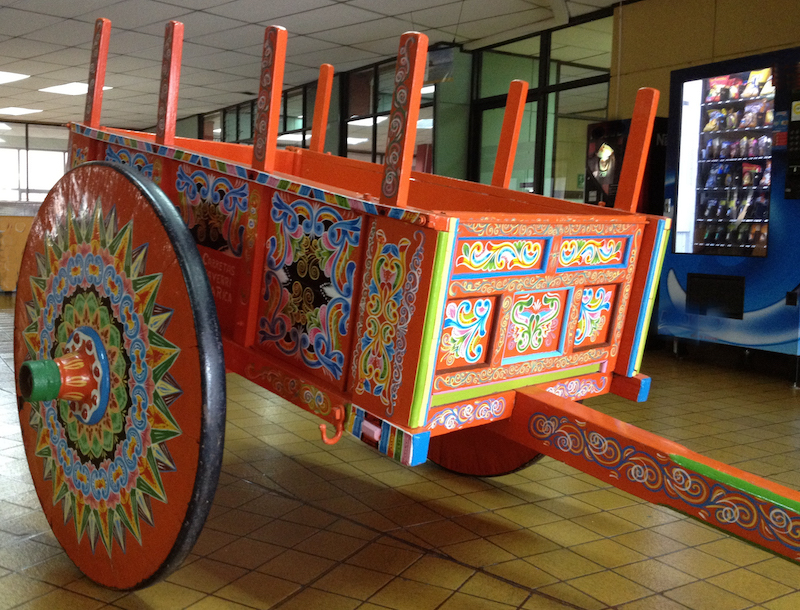Visiting Costa Rica’s, you will notice the colorful oxcarts. This typical oxcart is called “carreta de bueyes” and is one of Costa Rica’s most famous handicrafts. Each oxcart is unique with different drawings of bright colors, that can be geometric figures, flowers, animals or landscapes.


The tradition of painting and decorating the oxcarts began in the 20 th century. Originally the Spanish colonizer have brought the oxcart to Costa Rica and in the mid-19 th century a new design based on the indigenous Aztec disc was invented. Thus the more solid wheel could cut through mud without getting stuck. At this time the cart was used to transport coffee from the mountains to the pacific coast. Later the carts have been replaced by trucks, however they remain strong symbols of the country's rural past. Thirty years ago, the oxcart was officially declared a national symbol of Costa Rica. The beauty of the cart is not only visual, but also auditory.
The special construction of the wheels, which consist of sixteen wedge-shaped pieces of wood arranged in a circle and joined together with a metal ring make the sound of each oxcart unique. Specifically for that purpose the pieces of wood have been chosen to create a pleasing sound when the metal strikes the wheel hub. Later when the oxcarts became a symbol of individual pride better quality wood has been used to make the sound even better.
Today the cart is mostly used as art and can be found in different places of the country or is presented during national parades. However, since the oxcarts have become an obsolete means of transport the demand for carts has declined, and therefore the number of artisans who master the technique of making and decorating them has also declined in recent decades. Today the cart is mostly used as art and can be found in different places of the country, such as restaurants or museums or is presented during national parades.


According to the Guinness Book of World Records the largest oxcart in the world can be found in Sarchí -a beautiful town in the northern province of Alajuela. Here you can also find two oxcart factories that are open to visitors: “La Fábrica de Carretas Eloy Alfaro” and “Fábrica de Carretas Joaquín Chaverri” in which you will be temporarily transported back to the 19th century and get an idea of what life was like for the people of this area back then.
